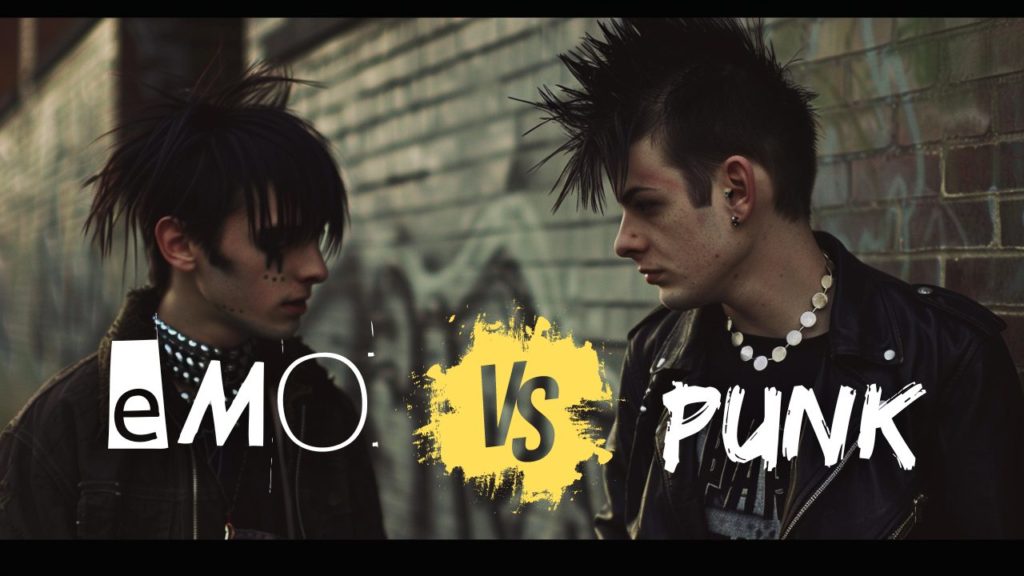Emo vs. Punk: A Deep Dive into Two Iconic Subcultures
Hey there, music enthusiasts and style rebels! Have you ever found yourself jamming to a playlist and wondering what exactly sets Emo and Punk music apart? You’re not alone! In this article, we’re going to unpack the world of Emo and Punk, exploring their origins, musical styles, fashion statements, and cultural impacts. Whether you’re a die-hard fan or just dipping your toes into these genres, get ready for a ride through some of the most influential subcultures in recent history!
The Birth of Punk: Anarchy and Raw Energy
Let’s kick things off with Punk – the loud, fast, and raw sound that shook the 1970s. Originating in the United States and the United Kingdom, Punk emerged as a reaction against the mainstream music of the time. Think of bands like The Ramones, The Sex Pistols, and The Clash. These pioneers weren’t just about music; they were a cultural revolt. Punk was a middle finger to the establishment, with its DIY ethic, anti-authoritarian messages, and a “don’t care” attitude.
Emo Emerges: More Than Just Feelings
Fast forward to the ’80s and ’90s, and you’ll find the birth of Emo. Short for ’emotional hardcore,’ Emo was initially an offshoot of the hardcore punk scene. Unlike Punk, Emo delved deeper into the emotional and personal side of music. Bands like Rites of Spring and Sunny Day Real Estate explored themes of emotional turmoil, introspection, and relationships. It’s not all about sadness and eyeliner, though – Emo is about expressing a wide range of emotions and connecting deeply with listeners.
Musical Styles: Clash and Contrast
When it comes to the sound, Punk and Emo have distinct musical styles. Punk is known for its fast tempos, short songs, and raw, unpolished sound. It’s straightforward, energetic, and often political. On the other hand, Emo is characterized by expressive, often confessional lyrics, with a focus on melody and dynamic shifts in intensity.
Fashion Statements: From Leather Jackets to Skinny Jeans
Punk fashion is iconic – think leather jackets, ripped jeans, band tees, and combat boots. It’s an aesthetic that screams rebellion and non-conformity. Punk style is closely tied to its anti-establishment roots, with an emphasis on individuality.
Emo fashion, meanwhile, is more about skinny jeans, band shirts, studded belts, and, yes, the infamous side-swept bangs. It’s a look that complements the emotional vulnerability of the music, blending punk influences with a more introspective vibe.
Cultural Impact and Misconceptions
Both Punk and Emo have significantly impacted popular culture, influencing everything from music to fashion, and even our views on society. However, they’re often misunderstood. Punk isn’t just about chaos and anarchy – it’s about freedom, authenticity, and challenging norms. Emo, while often stereotyped as whiny or melodramatic, is actually about emotional depth, authenticity, and the human experience.
The Legacy Lives On
Today, both genres continue to evolve and influence new bands and subgenres. From the gritty streets of 1970s London to the introspective melodies of 2000s Emo, these movements have left an indelible mark on the music world and beyond.
Conclusion: Embrace the Differences and Rock On
So, whether you’re donning a leather jacket and jumping into a Punk mosh pit or reflecting on your emotions with an Emo anthem, remember: both genres offer a unique and powerful way to express yourself. Emo and Punk may have their differences, but at their core, they’re about authenticity, emotion, and breaking free from the mainstream. Keep exploring, keep listening, and most importantly, keep rocking your own style!
For the readers who’ve stuck around, kudos to you! You’ve just unpacked the essence of Emo and Punk. Each has its place in the rich tapestry of music history, and who knows? Maybe you’re part of the next chapter in their ever-evolving stories. Stay tuned to your feelings, stay rebellious, and never stop rocking out to the beat of your own drum!
By Joel Poe

References:

